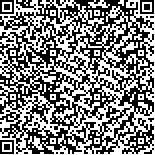|
|
| |
|
|
| 本文已被:浏览 648次 下载 780次 |

码上扫一扫! |
|
|
| 微残清颗粒逆转复发/难治性急性髓系白血病(非APL)耐药的临床观察 |
|
闫理想1,2, 姜静3, 杨向东1,2, 何敬1,2, 杨曦1,2, 陈海静1,2, 李德冠4, 史哲新1,2
|
|
1.天津中医药大学第一附属医院血液科, 天津 300381;2.国家中医针灸临床医学研究中心, 天津 300381;3.天津市中医药研究院附属医院消化二科, 天津 300120;4.中国医学科学院放射医学研究所, 天津 300193
|
|
| 摘要: |
| [目的] 观察微残清颗粒逆转复发/难治性急性髓系白血病(R/R AML)耐药的疗效及其机制。[方法] 将纳入的72例R/R AML患者随机分为治疗组(39例,微残清颗粒联合常规化疗)和对照组(33例,单用常规化疗)。统计分析两组治疗前后血常规、骨髓原始细胞比例、微小残留病(MRD)、WT1、骨髓缓解率、总生存率(OS)、缓解时间(RT)和不良反应。逆转录-聚合酶链反应(RT-PCR)、流式细胞术法检测治疗前后患者骨髓细胞多药耐药基因1(MDR1)、P-糖蛋白(P-gp)和细胞周期。[结果] 治疗后两组骨髓原始细胞(原始+幼稚)比例和外周血白细胞计数均明显改善(P<0.05);治疗后与对照组比较,治疗组在外周血象和骨髓原始细胞比例方面均得到明显改善(P<0.05)。治疗后两组MRD、WT1水平均较治疗前降低,但与对照组比较治疗组MRD、WT1水平降低较显著(P<0.05)。治疗后骨髓缓解率治疗组(61.54%)明显高于对照组(36.36%,P<0.05)。治疗后12个月总生存率治疗组(69.23%)高于对照组(45.45%,P<0.05),但24个月总生存率治疗组(40.05%)与对照组(27.27%)比较无统计学差异(P>0.05)。对照组12例患者骨髓缓解,最长缓解时间21个月,最短缓解时间5个月,中位缓解时间8.5个月,平均缓解时间9.83个月;治疗组有24例患者病情缓解,最长缓解时间21个月,最短缓解时间2个月,中位缓解时间14个月,平均缓解时间13.63个月。两组之间的平均缓解时间有统计学差异(P<0.05)。治疗后治疗组的P-gp比例低于对照组(P<0.05),而对照组的MDR1表达增加,治疗组的MDR1表达显著降低(P<0.05)。治疗后,治疗组骨髓细胞周期S期和G2/M期比例增加,G0期比例下降,与治疗前和对照组相比有统计学差异(P<0.05)。两组均有骨髓抑制、胃肠道反应、肝肾功能不全、脱发等不良反应,对症治疗后改善,两组不良反应发生率未见统计学差异。[结论] 微残清颗粒联合化疗可提高R/R AML患者的临床疗效,其机制可能与微残清颗粒降低MDR1编码P-gp蛋白的表达,诱导白血病细胞进入细胞周期,从而提高化疗药物的敏感性有关。 |
| 关键词: 微残清颗粒|复发/难治性急性髓系白血病|骨髓细胞多药耐药基因1|P-糖蛋白|细胞周期 |
| DOI:10.11656/j.issn.1672-1519.2023.03.01 |
| 分类号:R733.71 |
| 基金项目:天津中医药大学第一附属医院“拓新工程”基金项目(院2020057);天津市教委科研计划项目(自然科学)(2021KJ145);天津市科技计划项目(21JCQNJC01210)。 |
|
| Clinical observation of Weicanqing Granule reversed multidrug resistance in relapse/refractory acute myeloid leukemia (non-acute promyelocytic leukemia) |
|
YAN Lixiang1,2, JIANG Jing3, YANG Xiangdong1,2, HE Jin1,2, YANG Xi1,2, CHEN Haijing1,2, LI Deguan4, SHI Zhexin1,2
|
|
1.Department of Hematology, First Teaching Hospital of Tianjin University of Traditional Chinese Medicine, Tianjin 300381, China;2.National Clinical Research Center for Chinese Medicine Acupuncture and Moxibustion, Tianjin 300381, China;3.Department of DigestiveⅡ, Tianjin Academy of Traditional Chinese Medicine Affiliated Hospital, Tianjin 300120, China;4.Institute of Radiation Medicine Chinese Academy of Medical Sciences, Tianjin 300193, China
|
| Abstract: |
| [Objective] To observe the effect and mechanism of Weicanqing Granules in reversing drug resistance in relapsed/refractory acute myeloid leukemia (R/R AML).[Methods] The 72 patients with R/R AML were randomly divided into treatment group (39 cases,Weicanqing Granules combined with conventional chemotherapy) and control group (33 cases,conventional chemotherapy alone). Blood routine proportion of bone marrow primordial cells,minimal residual disease (MRD),WT1,bone marrow remission rate,overall survival rate (OS),remission time(RT) and adverse reactions. Bone marrow cell MRD1,P-gp and cell cycle were detected by reverse transcription-polymerase chain reaction(RT-PCR) and flow cytometry before and after treatment.[Results] After treatment,the proportion of bone marrow primitive cells (primitive+immature) and the count of peripheral blood leukocytes in the two groups were significantly improved (P<0.05);After treatment,compared with the control group,the peripheral hemogram and the proportion of bone marrow primitive cells in the treatment group were significantly improved (P<0.05). After treatment,the levels of MRD and WT1 in the two groups were lower than those before treatment,but the levels of MRD and WT1 in the treatment group were significantly lower than those in the control group (P<0.05). After treatment,the bone marrow remission rate in the treatment group (61.54%) was significantly higher than that in the control group (36.36%,P<0.05). The 12-months overall survival rate in the treatment group (69.23%) was higher than that in the control group (45.45%,P<0.05),but there was no difference in the 24-months overall survival rate between the treatment group (40.05%) and the control group (27.27%,P<0.05). In the control group,12 patients had bone marrow remission,the longest remission time was 21 months, the shortest remission time was 5 months,the median remission time was 8.5 months,and the average remission time was 9.83 months. In the treatment group,24 patients were in remission. The longest remission time was 21 months,the shortest remission time was 2 months,the median remission time was 14 months,and the average remission time was 13.63 months. There was significant difference in mean remission time between the two groups (P<0.05). After treatment,the ratio of P-gp in the treatment group was lower than that in the control group (P<0.05),while the expression of MDR1 in the control group increased,and the expression of MDR1 in the treatment group decreased significantly (P<0.05). After treatment,the proportion of S phase and G2/M phase of bone marrow cell cycle in the treatment group increased,and the proportion of G0 phase decreased,which was significantly different from that before treatment and in the control group (P<0.05). Both groups had bone marrow suppression,gastrointestinal reaction,liver and kidney dysfunction,hair loss and other adverse reactions,which improved after symptomatic treatment. There was no significant difference in the incidence of adverse reactions between the two groups.[Conclusion] The combination of Weicanqing Granules and chemotherapy can improve the clinical efficacy of R/R AML patients. The mechanism may be related to the decrease of the expression of MDR1 encoded P-gp protein and the induction of leukemic cells into the cell cycle,so as to improve the sensitivity of chemotherapy drugs. |
| Key words: Weicanqing Granule|recurrent/refractory acute myeloid leukemia|MDR1|P-gp|cell cycle |
|
|
|
|
